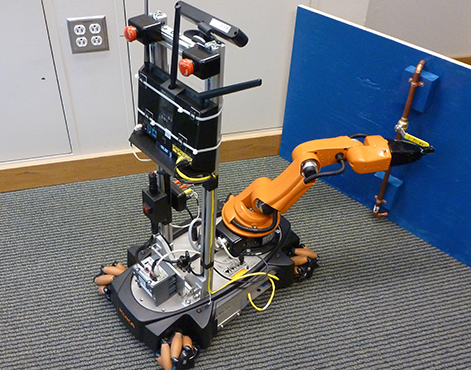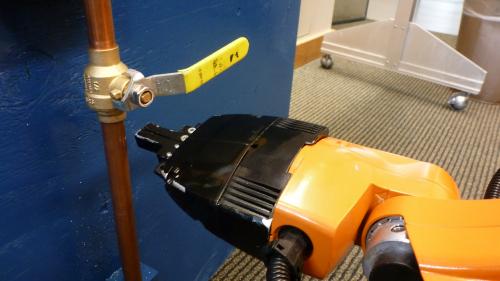
A skilled team of engineers at the University of Washington has invented a system of telerobotics, enabling use for disaster relief efforts. This technology would help people in need more effectively than actual humans reaching sites where calamity has struck.
This project is in part of the SmartAmerica Challenge, working with several other organizations to perfect the technology behind the endeavor. The SmartAmerica Challenge was created by members of the Presidential Innovation Fellows in order to effectuate the design and development of this technology that can benefit and connect the greater good, our society, and the outside world. Team leader and professor of electrical engineering at UW Howard Chizeck stated, “We are working on an application of technology that's clearly for the public good, and that's what motivated our team's idea.”
On May 13 from 1 to 4 p.m., the team at UW will execute a series of tests that exhibit the robot’s capabilities. In June, the team will perform a demonstration in Washington, DC. Interestingly enough, the team originally formulated about a half a year ago when the individuals met for an idea-sparking session at an event in DC.
Smart tech products already in existence will be integrated by a team called the Smart Emergency Response System that hopes to dynamically help people during times of disaster. These smart technologies will contain an onboard camera and sensor-equipped teleoperated tech that the robots will use during rescue missions and help guide people to safety. The teleoperated technology takes all data from sensors and cameras and sends it to first responders. Drones will spot damages from aerial vantage points and can help with rescues. There will also be sensor and GPS-harnessed vests that will be worn by search canines that will help responders stay informed with the situation at hand.

The team at UW combined the situational awareness of a human and the autonomous features of a robot to execute tasks precisely and efficiently. For example, a robot can be programmed to use its arm to switch off a gas valve during a time of crisis or emergency. Through the robot's cameras, the first responder would steer the bot toward the gas valve. The responder would then receive force feedback to make sure the valve was turned off correctly.
For The Smart Emergency Response Team, UW is working alongside Boeing Co., MIT, MathWorks, BluHaptics National Instruments, North Carolina State University, University of North Texas, and Worcester Polytechnic Institute.
UW is working on making autonomous robots that can maneuver more smoothly in tandem with its operators. The robot operators will be able to feel the real-time feedback from the course that the robot is navigating, such as pressure, in the hand controllers that the human is holding. This haptic feedback will alert the human operator of the situation's severity, and enable the robot to provide the human with touch sensations as if the operator were physically in the room and perceiving what’s going on.
By using this telerobotics form of technology, UW is staying on the cutting edge. When this tech is further developed, telerobotic devices’ applications could include performing rescue missions during times of crisis and helping veterans.
Story via Phys.org
Advertisement





